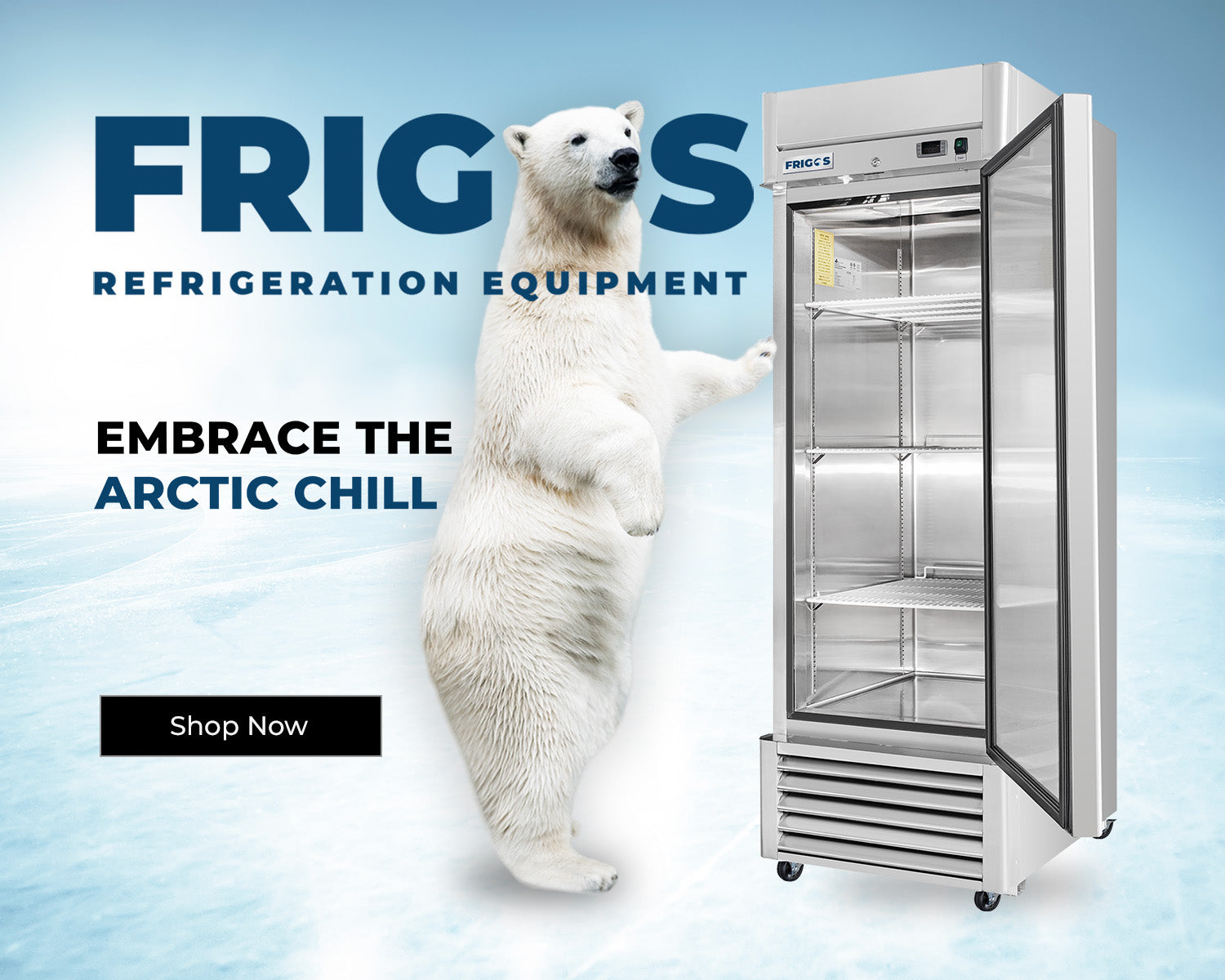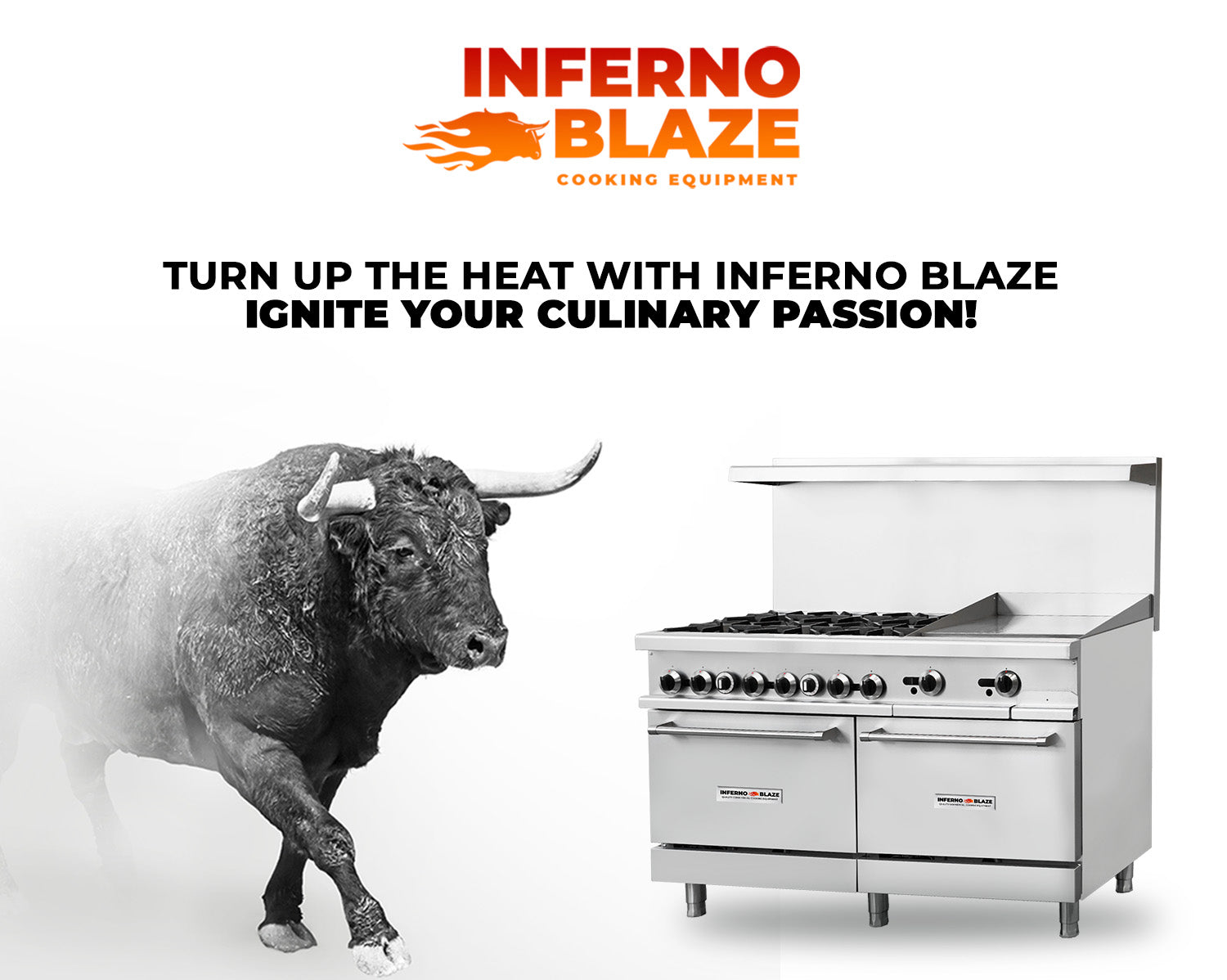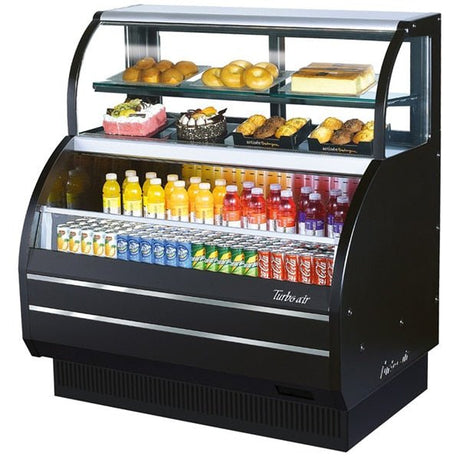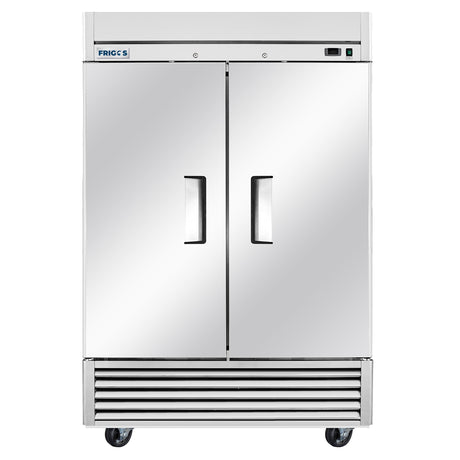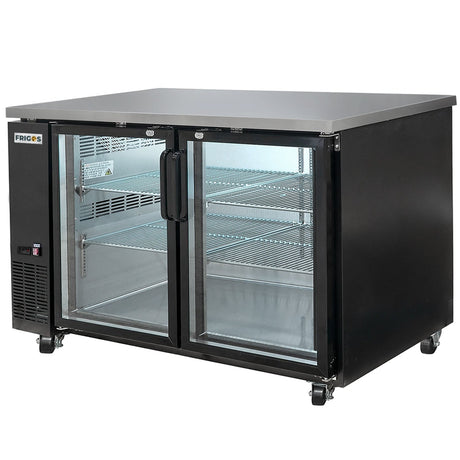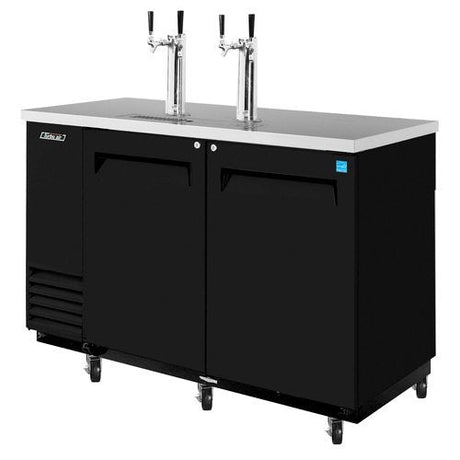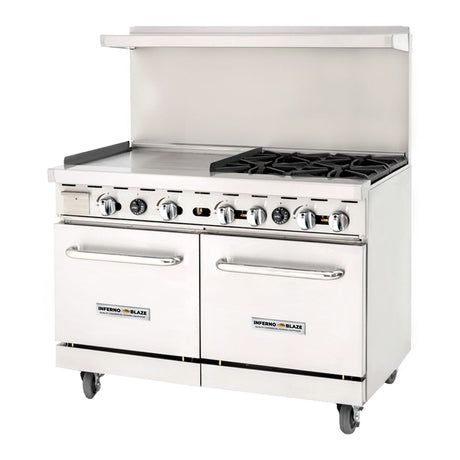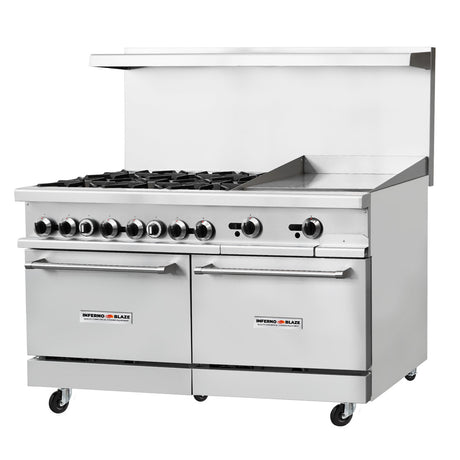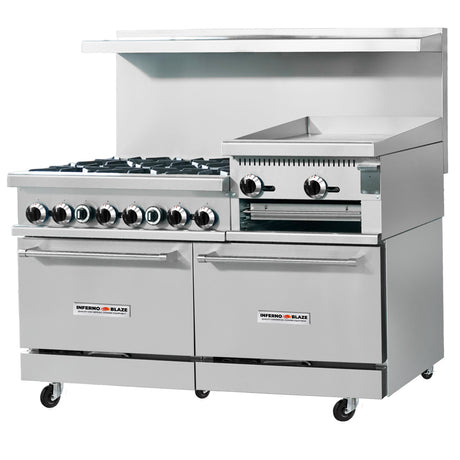Choosing the Best Commercial Refrigerator
When it comes to running a food business, from bustling cafeterias to cozy mom and pop restaurants, the choice of a commercial refrigerator can make a world of difference. The right refrigerator not only enhances the quality and efficiency of service but also helps you save money in the long run. Given that your reach-in refrigerator or freezer will likely be the most heavily used piece of equipment in your kitchen, it's crucial to find the right configuration in terms of door type, compressor, and size to meet your unique needs. In this guide, we'll explore the different types of commercial refrigeration, door options, and other key features to consider when selecting the best unit for your business.
Types of Commercial Refrigeration
Commercial refrigeration solutions come in various shapes and sizes, catering to different business needs. It's essential to understand your specific requirements before choosing the right equipment for your kitchen. Here's an overview of the different types of commercial refrigerators and freezers:
Single Door Reach-In Refrigerators and Freezers
- Location: Typically placed near the final production line or cooking area.
- Use: Ideal for storing portions of prepared meats, produce, and plate garnishes that you plan to use on the same day.
- Restocking: You can restock from a walk-in cooler or freezer weekly or as needed.
- Quick Access: Provides quick access to ingredients, resulting in faster service for happier customers.
Multiple Door Reach-In Refrigerators and Freezers
- Location: Usually located in the prep area.
- Use: Perfect for storing prepared items in bulk, such as pans of seasoned meat, fish, produce, and packages of sauces and dressings, for use throughout the week.
- Restocking: You can restock from a walk-in cooler or freezer weekly or as needed, reducing trips to the walk-in and improving prep times.
Roll-In Refrigerators and Freezers
- Location: Placed inside the prep area.
- Use: These units have an empty cavity that accommodates roll-in racks, making them ideal for buffets and catered events. You can prepare food, load it onto the rack, and roll it all into the refrigerator or freezer at once to save time.
- Advantages: Great for prepping food in advance and keeping it fresh before service.
Pass-Through Refrigerators and Freezers
- Location: Positioned between kitchen prep areas and service/stocking stations.
- Accessibility: These units come in 1, 2, and 3 section designs, offering access from both sides for better efficiency.
- Ideal For: High-volume establishments like schools, buffets, and healthcare facilities where seamless access is essential.
Walk-In Coolers and Freezers
- Location: Usually located outside in the receiving area.
- Use: Designed for storing crates of bulk ingredients, produce, poultry, meat, fish, and more.
- Advantages: You can receive deliveries directly into the walk-in, reducing kitchen traffic. Ideal for kitchens with substantial fresh/frozen stock.
Undercounter Refrigerators and Freezers
- Placement: Conveniently placed in the prep area for quick access.
- Space-Saving: Fits underneath counters, saving floor space.
- Use: Ideal for storing frequently used ingredients, making them perfect for pizzerias, sandwich shops, and catering businesses.
Door Type
The type of doors on your refrigerator is an essential consideration that impacts not only accessibility but also the efficiency of your kitchen. Here are two common types of reach-in fridge and freezer doors, along with key points to consider before making your choice:
Swing Doors
- Benefits: The stay-open feature makes loading and unloading inventory easier. They offer an unobstructed view of all contents in the unit.
- Example:
- Consideration: Ensure that your kitchen layout allows for the full swing of the door and doesn't hinder traffic flow.
Half Doors
- Benefits: Traditional swing doors split into two sections, conserving energy and promoting more consistent internal temperatures.
- Example: Avantco glass door reach-in refrigerator
- Consideration: Half doors are suitable for situations where you only need partial access to the unit, allowing better temperature retention.
Door Material
The choice between solid and glass doors has its advantages and drawbacks, and your decision should align with your specific requirements:
Solid Door
Pros:
- Easier to clean than glass.
- Offers better insulation, leading to superior energy efficiency.
Cons:
- Reduced product visibility compared to glass doors.
Glass Door
Pros:
- Provides better visibility of the contents before opening the door, reducing temperature fluctuations.
- Allows customers to view products, which can be an advantage in retail or display settings.
Cons:
- Offers less insulation than solid doors, potentially leading to higher energy consumption.
- Requires more frequent cleaning to maintain transparency.
Other Features to Consider
In addition to the door type and material, many reach-in refrigerators come with various features to simplify operation and maintenance. Here are a few notable features to consider when purchasing a new reach-in refrigerator or freezer:
Removable Gaskets
Gaskets form the airtight seal around your refrigerator's door, keeping cold air locked inside. Some reach-in refrigerators feature easily removable door gaskets, which expedite cleaning and sanitizing, helping maintain food safety standards.
Digital Thermostats
Many modern reach-in refrigerators and freezers are equipped with digital thermostats. These provide more accurate temperature readouts, making it easier to monitor and adjust temperatures. Digital thermostats can result in lower service costs and fewer maintenance calls.
Specification Line vs. Standard Duty
While all commercial refrigerators are designed to meet the demands of a busy food service operation, "Specification Line" reach-in refrigerators represent the manufacturer's top-of-the-line offerings. These products typically feature more advanced temperature controllers, a wider variety of exterior and interior options, and other design and construction upgrades. Specification Line models are often specified by consultants for institutional design projects and are suitable for businesses that require the utmost reliability and performance.
Installation Considerations
Choosing the right refrigerator is only part of the equation; proper installation is equally crucial for optimal performance and longevity. Consider the following factors during installation:
Measure Door Frames and Hallways
Before purchasing the unit, measure the length and width of door frames and hallways to ensure the unit can be moved into the room without any issues.
Ensure Proper Ventilation
Ensure that the room where you install the unit is well-ventilated. Manufacturers typically provide clearance guidelines for the back and sides of the unit. Non-compliance with these guidelines can result in inefficient operation and service calls. Avoid installing units in exceptionally humid or dusty areas, as these conditions can lead to rust or condenser coil malfunctions.
Level Surface
Install the unit on a level surface away from heat and moisture-generating equipment. Operating a reach-in refrigerator or freezer in high ambient temperatures can lead to breakdowns and may void the warranty.
Proper Power Supply
Ensure that the refrigerator or freezer is supplied with the correct voltage according to the manufacturer's specifications and that it has its own dedicated electrical circuit. Refer to the equipment manual for best practices and any special considerations for your specific unit.
Compressor Location: Decoding the Dynamics
Understanding the location of the compressor is crucial for optimal performance:
Bottom Mounted Compressors
Ideal for hot environments, these compressors pull in cooler air, but caution is needed to prevent clogging and reduce potential storage space.
Top Mounted Compressors
Suited for cooler environments, these compressors pull in warmer air, are less prone to clogging, and do not impact storage space. However, they may be less accessible for cleaning and service.
Commercial Refrigeration Maintenance Tips
The key to maximizing the lifespan of your commercial refrigerator lies in regular cleaning and maintenance:
Clean the Condenser Coil
Monthly cleaning with a condenser coil cleaner removes dirt and debris, ensuring optimal performance.
Clean Fan Blades
Regularly clean fan blades and motors with a soft cloth, taking precautions to prevent moisture damage during the cleaning process.
Ensure Airflow
Clear air intake and exhaust areas of any debris or dust weekly to facilitate unimpeded access to clean air.
Wash Door Gaskets
Clean door gaskets weekly by removing them from the frame, soaking in warm water and soap, drying with a soft cloth, and ensuring proper sealing upon replacement.
Replace Worn-Out Parts
Conduct regular quality checks on essential parts such as fuses, bulbs, thermostats, and gaskets. Timely replacement of worn-out components is crucial to avoid larger issues.
By arming yourself with a thorough understanding of the diverse types, features, and maintenance requirements of commercial refrigerators, you empower your kitchen with the tools necessary for seamless operations and long-term success. Be sure to explore our commercial refrigerator reviews for a curated selection tailored to meet your business needs.






